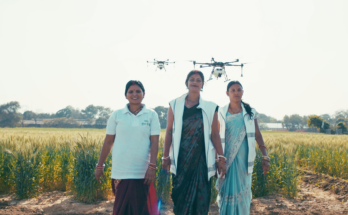By Darpan Sachdeva

In an era where technological advancement seems to accelerate daily, we’re witnessing a remarkable transformation in how innovation addresses fundamental human needs, particularly in developing regions. This isn’t just about the latest smartphones or social media platforms; it’s about life-changing solutions that tackle humanity’s most pressing challenges. As we advance deeper into the 21st century, technology has emerged as a powerful force for positive change, bridging gaps and creating opportunities where none existed before.
The Power of Purpose-Driven Innovation
When technology meets human necessity, miraculous solutions emerge. This intersection of innovation and human needs has become the breeding ground for some of the most impactful technological developments of our time. The revolutionary “Drinkable Book” stands as a testament to this principle, exemplifying how innovative thinking can solve critical problems that affect millions.
In sub-Saharan Africa, where 358 million people lack access to safe drinking water, this ingenious invention transforms lives in ways previously unimaginable. Each page of the book, embedded with silver and copper nanoparticles, can purify up to 100 liters of water. The entire book provides safe drinking water for one person for four years, making it both sustainable and practical. The success stories from South Africa, Ghana, Kenya, Haiti, and Bangladesh, where this technology eliminated 99.9% of bacteria from contaminated water sources, demonstrate the profound impact of purposeful innovation.

The development of the Drinkable Book involved years of research, combining materials science, chemistry, and public health expertise. Its success lies not just in its technological sophistication but in its simplicity of use and cultural acceptability. The pages contain simple instructions printed in local languages, making it accessible to communities with varying literacy levels.
“Technology is best when it brings people together.”- Matt Mullenweg (Founder of WordPress)
Global Success Stories: Technology Meeting Basic Needs
Solar-Powered Refrigeration in India
In rural India, where reliable electricity remains a challenge, the solar powered “Eco-Cooler“ has revolutionized vaccine storage and food preservation. This innovation, developed by Sustainable Energy for All (SE4All), represents a crucial breakthrough in cold chain management. The system has helped reduce vaccine wastage by 25% and extended food shelf life in over 100 villages, impacting approximately 50,000 lives.
The Eco-Cooler’s success lies in its adaptability to local conditions. Operating independently of the grid, it uses advanced thermal storage technology to maintain consistent temperatures even during cloudy days. The system’s maintenance requirements are minimal, and local technicians can be trained to handle basic repairs, ensuring long-term sustainability.
Mobile Banking Revolution in Kenya
M-PESA, Kenya’s mobile money transfer system, has transformed financial inclusion in East Africa. Since its launch, it has provided banking services to over 20 million previously unbanked individuals, enabling secure transactions, savings, and micro-loans. This technology has lifted an estimated 2% of Kenyan households out of poverty.
The system’s success has sparked similar initiatives across Africa and Asia, demonstrating how mobile technology can overcome traditional banking infrastructure limitations. M-PESA’s impact extends beyond individual financial empowerment; it has created a new ecosystem of digital entrepreneurs and small businesses.
AI-Powered Disease Detection in Bangladesh
Artificial Intelligence is making healthcare accessible in remote areas through smartphone-based diagnostic tools. In Bangladesh, the “ChestEye“ AI application helps healthcare workers diagnose tuberculosis with 95% accuracy using just a mobile phone camera, serving over 100,000 patients in areas with limited access to medical facilities.
This technology demonstrates how AI can democratize healthcare access. The application continues to learn and improve through machine learning, adapting to local conditions and disease presentations. It’s now being expanded to detect other respiratory conditions and has become a model for AI-driven healthcare solutions in developing regions.
Smart Agriculture in Ethiopia
Digital farming solutions have transformed Ethiopian agriculture through the Agricultural Transformation Agency’s (ATA) digital platform. Using AI and satellite data, farmers receive personalized advice on planting times, crop selection, and resource management. This technology has increased crop yields by 35% for over 100,000 small-scale farmers.
The platform integrates traditional farming knowledge with modern agricultural science, creating a hybrid approach that respects local practices while introducing innovative solutions. Farmers receive information through SMS and voice messages in local languages, ensuring accessibility regardless of literacy levels.
Clean Energy Solutions in Rural Morocco
The Noor Solar Project in Morocco demonstrates how renewable energy technology can power remote communities. This initiative has provided sustainable electricity to over 2 million people, reducing carbon emissions while creating local employment opportunities. The project combines concentrated solar power with energy storage solutions, ensuring reliable power supply even after sunset.
The Human Impact
These innovations aren’t just statistics; they represent real change in people’s lives. A farmer in Ethiopia can now better provide for their family through improved crop yields. A mother in Kenya can safely save money for her children’s education using mobile banking. A community in Bangladesh can access healthcare that was once out of reach.
Personal stories from beneficiaries highlight the transformative power of these technologies. For instance, Sarah Kimani, a small-scale farmer in Kenya, increased her income by 40% after adopting smart farming techniques. Mohammed Rahman, a community health worker in Bangladesh, now serves triple the number of patients using AI-powered diagnostics.
The Role of Global Collaboration
What makes these success stories possible is the unprecedented level of global collaboration. Scientists, engineers, entrepreneurs, and local communities are working together across borders to develop and implement these solutions. The “Drinkable Book“ project, for instance, involved researchers from multiple countries working with local communities to ensure the technology met real needs.
This collaborative approach has several key components:
1.Knowledge sharing between developed and developing nations.
2.Cross-cultural understanding and adaptation of solutions.
3.Local capacity building and training.
4.Sustainable implementation strategies.
5.Continuous feedback and improvement cycles.
Looking Ahead
As we look to the future, the potential for technology to solve human challenges seems limitless. Emerging technologies like AI, blockchain, and biotechnology are opening new frontiers in addressing global challenges. However, the key lies in ensuring these innovations remain focused on human needs and accessibility.
Future trends and possibilities include:
1.Blockchain for transparent aid distribution.
2.Advanced biotechnology for sustainable food production.
3.AI-driven educational solutions.
4.Smart city solutions adapted for rural communities.
5.Renewable energy microgrids.
The Path Forward
To continue this positive trajectory, we must:
1.Foster collaboration between technology developers and local communities:
a) Establish partnerships between tech companies and local organizations.
b) Create platforms for community feedback and input.
c) Ensure technology development is guided by actual needs.
2.Ensure innovations are sustainable and culturally appropriate:
a) Design solutions that can be maintained locally.
b) Respect and incorporate traditional practices.
c)Consider environmental impact.
3.Make technologies accessible and affordable:
a) Develop cost-effective solutions.
b) Create flexible payment models.
c)Utilize existing infrastructure where possible.
4.Support education and training to enable technology adoption:
a) Implement comprehensive training programs.
b) Develop local technical expertise.
c)Create user-friendly interfaces and documentation.
5.Maintain focus on solving real human problems:
a) Prioritize basic needs and essential services.
b) Measure impact through human-centered metrics.
c) Ensure long-term sustainability.
Technology’s true power lies not in its complexity but in its ability to improve human lives. The success stories from across the developing world show us that when innovation is guided by human needs, remarkable transformations are possible. As we continue to advance technologically, let’s ensure our focus remains on creating solutions that serve humanity’s most pressing needs.
These examples remind us that technology’s greatest achievement isn’t in creating the most sophisticated solution, but in making life better for those who need it most. As we move forward, let’s continue to harness technology’s power to build a brighter, more equitable future for all.
The journey toward technological empowerment is ongoing, and each success story adds to our understanding of how innovation can serve humanity. By maintaining our focus on human needs and ensuring accessible, sustainable solutions, we can continue to unlock technology’s potential to create positive change worldwide.
“I believe that technology is here to serve human needs, not the other way around. The future is not about artificial intelligence replacing human intelligence. It’s about human intelligence being augmented by artificial intelligence.” -Satya Nadella (CEO of Microsoft)
 Darpan Sachdeva is the CEO and Founder of Nobelthoughts.com. Driven by a profound dedication to Entrepreneurship, Self-development, and Success over an extended period, Darpan initiated his website with the aim of enlightening and motivating individuals globally who share similar aspirations. His mission is to encourage like-minded individuals to consistently pursue success, irrespective of their circumstances, perpetually moving forward, maintaining resilience, and extracting valuable lessons from every challenge.
Darpan Sachdeva is the CEO and Founder of Nobelthoughts.com. Driven by a profound dedication to Entrepreneurship, Self-development, and Success over an extended period, Darpan initiated his website with the aim of enlightening and motivating individuals globally who share similar aspirations. His mission is to encourage like-minded individuals to consistently pursue success, irrespective of their circumstances, perpetually moving forward, maintaining resilience, and extracting valuable lessons from every challenge.



Way cool! Some extremely valid points! I appreciate you penning this write-up and also the other parts of
the website is extremely good.
It’s an amazing bit of writing made for all of
the online users; they may take advantage from using it I am
sure.
Appreciate this post. Will give it a try.
Hey there, You’ve done a great job. I will definitely digg it and personally suggest to my friends.
I am sure they will be benefited from this site.
May I simply just say what a comfort to uncover a person that truly understands
what they’re talking about on the internet.
You certainly realize how to bring a problem to light and make it important.
More and more people should read this and understand this side of the story.
I was surprised you are not more popular given that you most certainly possess
the gift.